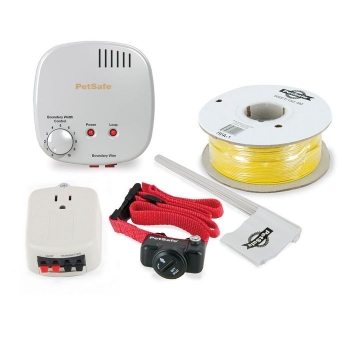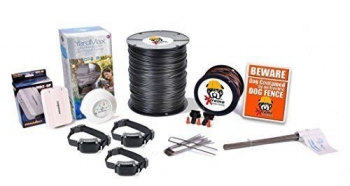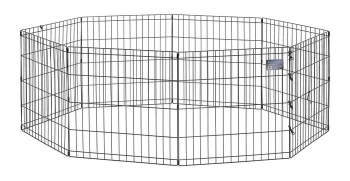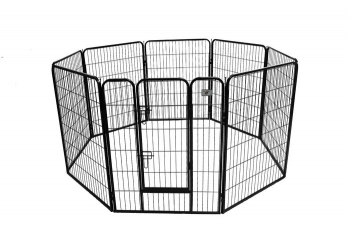Portable Dog Fences - The Ultimate Buying Guide: Paws Away! Choosing A Dog Fence - WOOF!
Woolfie! Woolfie?! WOOOOLFIE?! Has anyone seen my dog?!
If you have come across this guide, it means you might be looking for a safe way to keep your dog at home. To avoid pinning posters saying ‘Dog missing. Reward 1000$’, take care of your dog in advance and learn how to choose a portable dog fence with our very special guide dedicated to ensuring your little (or not so little) furry friend’s security.
Table of contents
- What is a portable dog fence?
- What portable dog fences can be used for?
- Advantages of portable dog fences.
- Drawbacks of portable dog fences.
- Types of dog fences.
- Electric fences: dog training.
- How to choose a portable dog fence.
- Where can I buy a portable dog fence?
- Top 5 portable fences!
- Building your own portable dog fence: a comprehensive instruction.
- Useful videos.
- Conclusion.
1. What is a portable dog fence?
A portable dog fence is a containment system that is designed to prevent the escape of your dog from a certain area. This fence’s name suggests that it can be transported to any place where you need it, and portability also implies easy assembly (well, in most cases).
2. What portable dog fences can be used for?
Privacy perimeter is a must for any dog owner. There are so many reasons to keep your dog in a determined area, so portable dog fences are the best solution if your case is among the following:
- If you travel with your dog. No matters what the distances are, taking your dog with you always means you will have to keep an eye on your pet. Leaving it to play in a designated area is often the case, so high portability and easy assembly are the key factors taken into account. Even if you’re visiting your aunt that lives several houses down the street, there is a chance that your dog will try to escape never-ending hugs of your aunt and flee to home;
- If you like camping. Enjoying nature and songs by the fire can be nice, but your dog may get attracted by something more interesting (to your dog, of course, not you!) and get lost. Taking a portable camping dog fence is the right solution for such a case. Also don't forget to take portable carport kit to safe your car during camping;
- If you are experiencing the joys of potty training. Potty training is easier if you have put your dog in a certain area. Crate training is also more efficient in such conditions;
- If you do not have a permanent fence. Imagine you are building a house and have not built a fence yet. Do you want your dog to walk away or have some brick falling on your pet’s head? Then install a portable dog fence;
- If you want to save your pet from people. Prevention of your dog walking away is not the only reason for buying a portable fence. You also would not want your dog to encounter people that might harm your dog or steal it or feed it with something inappropriate. Note that not all portable fences can help to deal with such issues (e.g. electrical ones);
- If you do not want any more dogs. Whatever you thought after reading this subtitle, the key is that your female dogs may encounter some Don Juan that may trouble you with puppies that will appear as a result. Dog fences prevent such things from happening. Well, unless the groom makes up a sophisticated plan of escape for his bride. Hush!
- If there are places in your house that you do not want your dog to have access to. Your bathroom, children’s room, pool and other facilities should be ‘dogless’ most of the time. For example, you can use temporary puppy fence indoor to give your puppies some freedom without any harm to your home.
- If your dog is not a box champion. Pedigree breeds, small dogs and other pets that cannot scare the enemy or beat him in a duel are to be kept in a safe zone.

3. Advantages of portable dog fences.
Portable dog fences are distinguished by higher versatility than permanent fences and have the following features:
- Transportability. First and foremost, portable dog fences can be carried to any place, thus providing security in a perimeter that can be altered at any time. It is impossible with permanent fences;
- Durability. Regardless of type, portable dog fences are made of durable materials that can endure harsh weather;
- Affordability. Portable dog fences are generally cheaper than permanent ones, both in installation and maintenance;
- Flexibility. Most portable fences are capable of changing shape. It means you can adjust the perimeter to current conditions. More than that, such fences can be used both inside and outside.
4. Drawbacks of portable dog fences.
Although portable dog fences have way more advantages than drawbacks, there are still some that must be noted. First, there are drawbacks that are specific to fence types only. Such ones will be discussed in the next section. Second, there is only one drawback of portable dog fences in general, that is assembly or installation process can be tricky. All other issues depend on of fence types.
5. Types of dog fences.
There are two major types of portable dog fences available on the market: physical fences and electric fences. These types fall into smaller subtypes.
a) Physical fences. Such fences are traditional and generally made of metal or strong plastics. They can be made of metal and be covered with plastic that is durable and even can be chewed. They have certain advantages over wireless systems and share some with them. Such are flexibility of shaping and durability. The main advantage of physical fences is that it can keep your pet from people and other animals. Other strong points are the same as with those of wireless fences’ and will be described below.
Portable dog fences made of metal can endure attacks of aggressive hostile animals and are suitable for active dogs that may try to escape the perimeter.
The overwhelming majority of such fences belong to the type of folding portable dog fences.
Customers’ feedback show that physical fences have their own PROs and CONs:
(+)Pros:
- High durability;
- Other dogs cannot have access to your pet;
- They are cheaper than building a physical fence;
- Stranger-proof!
(-)Cons:
- Some dogs tend to dig under the fence and escape;
- Some physical fences are heavy.
b) Invisible fences. This type falls into the following subtypes: wired and wireless. Invisible dog fences are sometimes called electric due to its working principle. All of them share the following advantages:
- No chance of digging under the fence. Since there are no physical walls that keep your dog inside, your pet cannot dig under it and escape;
- Easy to maintain. Whereas physical barriers need to be repaired quite often due to weather, pet chewing and other impacts, electrical fences are easier to maintain;
- Better affordability. Buying an invisible dig fence is cheaper than building a permanent physical fence;
- Does not affect the appearance. Since such fences are not obstructions of any kind, so the view will be spoiled by any objects.
All electric fences regardless of subtypes use the same mechanics: your dogs gets equipped with a collar that receives signals from your boundary perimeter. When the dog approaches the determined borders, the collar produces a warning sound. If it does not help, the collar emits a static shock. Of course, this wireless technology requires some dog training first.
Another important thing to note is that electric fences are not a good choice in regions where power failures are common. You do not want your dog to run away because it is thundering all the time, do you?
When it comes to subtypes, they have the following peculiarities:
- Wired dog fences. The difference between wired and wireless fences is that wireless fences have the wires (obvious, right?) which are placed underground, and wireless ones use radio signals to transmit boundary. Since wired systems are difficult to install, they cannot be called portable (or at least easily portable), but if you move from time to time - say, once in half a year), then it is also a good solution. Wired dog fences have the following benefits:
- Stable boundaries. Wired technology is more precise than wireless one and is more reliable. The difference is not that drastic, though;
- Custom shaping. Wired systems can be used if your yard, or perimeter, shape is sophisticated. Also, few dog owners would like their pets to relax in a pool or pond, so if you have some water in the yard, you can use wire to shape the perimeter in such a way so that it would block the pool. Poor dogs, they just want to take a nap on a swimming mattress just like you do…
- Its disadvantages, besides the already mentioned difficulty of installation, include the issue that may occur if you happen to need to repair your fence. In such cases you need to dig again, and often you do not know exactly where to dig if something goes wrong. Make sure not to damage the wire while digging too.
Wired fences are popular among the USA customers, so here is what they say about it:
(+)Pros:
- Ultimate customization - no other device can shape the boundaries like this one!
- If you buy additional wire, you can determine an ENORMOUS area for your dog to stay in;
- They are cheaper than building a physical fence.
(-)Cons:
- Such fences are difficult to install and repair, since such works require digging.
- Wireless dog fences. It is the best kind of fences, as it is truly portable. It has a single transmitter with adjustable radius, which means you can change the settings so that the signal would cover your house and yard area.
- High portability. Wireless fences do not require lots of stuff to install it and works as a solid system that is easy to carry;
- Easy installation. It is the best option among invisible dog fences in terms of portability, because it takes only 1-2 hours to install such a fence;
- Weak points include two issues: first, the radio signal is present within a circular area. It means you cannot shape it the way you like it. Second, the signal may differ a little bit due to weather changes.
Wireless fence’s PROs and CONs stated in the feedback are mostly the following:
(+)Pros:
- No need to maintain the fence;
- Convenient to use and carry - consumers report instant installation and easy transportation;
- Fully adjustable settings;
- The possibility of creating overlapping areas with various transmitters.
(-)Cons:
- Dog training can be a failure if you do it wrong;
- Other animals can harm your dog;
- Strangers can kidnap your dog or feed it with some nasty things.
Electric fences are very popular in the USA. Though they may seem to be cruel or remind of a concentration camp, it’s not true. Such fences are safe for everyone, including the dog. The static shock correction emitted by the collar is not designed to injure the dog. They feel the same as when you walk in socks on a carpet and then touch something made of metal. It is merely a warning and cannot be accused of cruelty. Even veterinarians prove that such pet containment systems are safe and well-designed.
Here is the video that explains how invisible fences work:
6. Electric fences: dog training.
Keep in mind that if you decide to choose an electric fence (whether an in-ground or wireless one), you are to train your dog. There is no way you should rely on your dog learning how to use it itself. There is a general pattern for training dogs to walk within invisible borders. Here are the steps:
- Step 1. Install the system. Mark the boundaries with special flags so that your dog could see where they are;
- Step 2. Switch the collar to sound-only mode. Take your dog and approach the borders. As soon as the collar produces a warning sound, step back and praise your dog. Repeat several times. Show your dog all the flags within one day to train the dog to avoid the flags;
- Step 3. It’s time to turn static shock on. Set it to the lowest and take your dog to the boundaries. Remember to praise your dog when everything is done correctly;
- Step 4. After several days of such training, tempt your dog to go out of the perimeter by throwing a toy outside the fence. If your dog stays within the designated area, praise your dog;
- Step 5. Try letting the dog walking in the yard on its own. Keep an eye on it, though, and get to this step only if your dog has accomplished all the previous tasks;
- Step 6. When a couple of weeks have passed, start removing the flags one by one. Give your dog time to get used to changes.
If you follow this instruction, you will have great experience using the electric fence.
Some important notes:
- Since your dog is trained not to leave a certain area, use a common collar when going for a walk and use the same route that does NOT cross the borders to walk out of the yard;
- As with any other tricks, training a dog requires patience. Play with your dog while training and make sure your dog does not get tired. Frequent lessons that last about quarter an hour are the best option;
- Since we’re interested in portable dog fences, remember to train your dog and let is get accustomed to new perimeters as you travel;
- You can use such fences for containment of other pets, such as cats or… cows. But that is only if you want to overcome the challenge of training a cow!
- Mind the animals that may approach your dog, power failures and make sure the collar has not broken;
- Remember to replace batteries. Such collars use (well, in most case) ordinary watch batteries, so have some in store. Generally replacement is needed every three or four months.
If you want to know more about different dog training you can look here. This is site of known dog trainer Cesar Millan and is good resource about everything that concerns dogs.
7. How to choose a portable dog fence.
Choosing an electrical fence
The general tips are:
- If you have a pond or pool or bushes or trash that you do not want your dog to approach to, choose a wired fence. It is highly customizable in terms of shape;
- If you travel very often, choose a wireless fence, since its installation is very fast.
Choosing a physical fence
If you decided to use an ordinary physical fence, there are more restrictions. Since there is a wide range of models present on the market, you should take into account several things while choosing a portable dog fence:
- Dog size matters. That is quite obvious - choose fence height that is enough to prevent your dog from jumping over it;
- Doggy digger. If your dog loves digging all the time, consider digging the fence. The depth should depend on your dog’s digging ability. Keep in mind that even digging habit may vary - some are good at tunneling, others prefer to dig large holes;
- Dog temperament is also to be taken account of. If your dog is active, aggressive, loves chewing etc., choose a fence that will be able to endure all the possible ‘attacks’;
- How often you are going to move. If you intend to travel a lot, pick a portable dog fence that is foldable and easy to assemble.
When choosing between the two types, namely physical and electric, consider animals that your dog may encounter. If there are other dogs or wandering animals of other kind, choose a physical fence. If there are no threats and you just want your dog to stay where it is, choose an electric one.
8. Where can I buy a portable dog fence?
The most traditional way to buy a portable dog fence is to visit hardware stores, big box retailers or home improvement warehouses. You can take a closer look at them and see the fences with your own two eyes.
If you want a particular model (or have set some requirements in terms of features), the optimal way is to use online stores. Amazon.com is the right place to choose from a wide range of goods being presented. Don’t forget to use filters to search for products that you need.
9. Top 5 portable dog fences!
Here is our usual chart of the best models found online.
Features:
- Includes a single transmitter and a collar;
- Completely adjustable circular perimeter of up to 90 ft (27.4 m) in all directions;
- Collar fits neck sizes of 6-28 inches (15-71 cm);
- Easy installation. All you need to do is to turn the transmitter on. That’s it;
- Waterproof collar;
- Automatic shut-off. If the dog leaves the boundary, the corrective shock is active for 30 seconds and then will not activate for 5 minutes;
- You can join multiple circles! For instance, you and your neighbour can set a pair of transmitters so that the circles would overlap. This way your dogs can play together!
- High portability. Extremely easy to carry and use;
- Fits best for dogs of 8 lbs (3.6 kg) and more;
- Dimensions: 11 x 12 x 9 inches (27.9 x 30.4 x 22.8 cm);
Customer feedback:
- “I have an 11 lb Yorkipoo and a 30 lb bichon rat terrier. Works great for both on a low shock setting. Started using on both as pups and have been using the original equipment for nine years without a problem”. (Amy G.)
- “My experience over about 6 months is the system works brilliantly. I have had no problems” (Stan Boyle)
- “The corrective device can fit onto any nylon collar so if the stock collar doesn't fit you can get another collar that does” (Rik Guyler)
- About the installation: “It's so easy, but… follow the official instructions, but you literally plug it in and then adjust the dial to the radius that you want” (Jennifer Baldwin)
- About the outdoors use: “…you cannot even put it somewhere that it gets below freezing” (MMagee)
It is an example if a good in-ground wired system.
Features:
- Fully customizable perimeter;
- Includes 500 ft (152.4 m) of wire;
- If you buy additional wire, you can extend your perimeter to 5 acres (20234 square meters);
- Waterproof collar;
- Collar fits neck sizes of 6-28 inches (15-71 cm);
- Automatic shut-off. The principle is the same as that of the previous model (50 seconds if borders are crossed and 5 minutes’ blocking);
- Fits best for dogs of 8 lbs (3.6 kg) and more;
- Good Ratings. This product has proved to be highly efficient;
- Tone-only mode available;
- Dimensions: 12 x 4.4 x 6.1 inches (30.4 x 11.1 x 15.5 cm);
Customer feedback:
- “I have it around 5 acres and it works great”. (Lola Roch)
- About compatibility: “…both transmitters and receiver collars, run on a different frequency and are not compatible with any other brand of in-ground fencing” (Product Expert)
- “I had fencing on three sides of the yard ran the line along the whole fence to make a complete circuit. Works great!” (Jennifer Dievendorf)
- “The hardware is designed to be installed inside where it is not in the elements. The directions ask for a spot that will not get below about 50 degrees even. The radio wire is sealed as long as it does not get compromised it should be fine” (John J. Mantello)
- “My dog weighs about 65 pounds and it works great. Hes a German Sheperd Mix” (Nelson Gil Jr)
It is a professional grade DIY installation kit. No need to call a specialist to install the system!
Features:
- Basic coverage is ¼ acre (1011 square meters);
- Coverage can be expanded to 10 acres (40468 square meters);
- The basic kit is for three dogs, but if you buy additional collars, there is no limit. Of course, the dogs will not feel comfortable if they find themselves in an Indian dog bazaar, so mind the space.
- Lightweight collar (3 ounces/113.4 g);
- YardMax Space-Saving Mode - gives your dog 30% more room;
- Fits best for dogs of 10-150 lbs (4.5-68 kg);
- 3 year warranty;
- The kit also includes 1500 feet (457.2 m) of 14 gauge eXtreme dog fence® brand wire, 50 feet (15.2 m) of 16g eXtreme® brand twisted wire, heavy duty surge protectors, 150 flags, 1 wall transmitter and many other!
Customer feedback:
- “The boundary is good but is weaker in some areas, probably due to frequency. It is effective and the dog is learning fine on it. The wire it comes with is probably the worst wire you can have. You MUST replace the wire with a better gauge wire. I found 16 gauge to be perfect” (Robert B.)
- “The install was very easy and took about 1 day, my dog quickly learned to respect the boundary and now has free roam of our yard and is off her leader. …this system allows you to charge the collar in about 3 hours and you get 2 months of use out of it. I highly recommend this system especially if you have a smaller yard” (ChattanoogaTN)
- “We are really happy with our purchase… The instructions have diagrams that help visualize it, so that was helpful”.
This exercise pen is portable and comes in various sizes.
Features:
- This one is designed for puppies;
- 24W x 24H inches (60.9 x 60.9 cm);
- Durable black e-coat finish;
- Folds flat and can be easy transported or stored;
- Ground anchors included;
- Weight: 10.4 pounds (4.7 kg);
- There are 8 pieces of the above mentioned size;
- There are 4 clips to clip 2 ends together;
- Highly durable;
- Folds in a zig zag fashion;
Customer feedback:
- “For the competitive price and versatility, this pen is an excellent purchase. After about a month of use, the pen's black coat shows no wear” (Danny Yu)
- “The biggest problem however is the bad welding job on the metal mesh, parts are just rough whereas in other areas metal pieces/ particles come of the product, both defects can be damaging to animals imo” (Heinz E.)
- “I have been using this for my adult dogs and it has been working well” (Emily Al)
- “My puppy took to this pen very fast. Just the right size and very sturdy” (Danielle Rodriguez)
This is another physical fence that can be used for other animals’ containment too.
Features:
- Coated with faux fur;
- Board material: pressed wood;
- Condo height is 76 inches (193 cm);
- Base dimension: 23 x 23 inches (58.4 x 58.4 cm);
- Easy installation;
- Can be used both inside and outside;
- You can connect several playpens;
- Weight: 52.8 pounds (23.9 kg);
Customer feedback:
- “The only reason I didn't give this a rating of "5" is because of the door. It's a little skinny...a little difficult to get through. Other than that, I am very happy with this product so far” (DebraT)
- “This dog pen is worth every cent and more! We have a husky/shepherd mix and we've used it for a kennel for him outside and it has held up really well. VERY heavy duty--highly recommended!” (Tiffany)
- “It was hard to figure out a flooring and keep it sturdy on carpet but once we got that done it worked great” (Taylor Dawsey)
- “My only complaint would be gate - which others have mentioned as well - while about the right size for a dog... not so much for a well rounded person. ;-) Luckily, its easy enough to pull one of the connector stakes and move the panel if we were to have need to go inside. Overall, it is well worth what we paid for it” (2LabMom)
10. Building your own portable dog fence: a comprehensive instruction.
Since making an electric fence requires certain skills and knowledge of radio electronics, we will focus on making a DIY physical portable dog fence.
You will need:
- Live stock panels of heavy wire. The sizes may vary depending on the amount of dogs to be kept inside, their size, etc. The standard size most commonly found in stores is 20 feet (6 m) long and 48 inches (128 cm) tall that come in sections of 2x4, 4x4 or 6x8;
- Aluminum wire;
- Gate hinges (if needed);
- Metal gate;
- Sledge hammer;
- Pliers;
- Clamps;
- Level;
- Tape measure;
- Saw.
Steps:
- Step 1. Find an appropriate place to lay out the panels. Use level to adjust the angle.
- Step 2. Join the panels together by using clamps or ordinary wire. Make sure your dog cannot escape and fix the panels in such a way so that they would slightly overlap each other. Fix all the corners.
- Step 3. Use safety latches to open the gate or just fix it with another wire. Make sure there are no sharp wires that stick out and can hurt your dog.
- Step 4. If you want to set up a normal gate, place a metal pole at the front two corners, place a chain link fence post over it, connect the hinges and voila!
- Step 5. If it is not enough, you can reinforce the construction by placing poles at each corner. You can bend the wire to form a corner. You can also make a fence without poles, just zig zag the panels.
Thanks Sunshiine for contribution.
11. Useful videos.
Here are several more ways to make a DIY portable dog fence that may ease the process for you!
12. Conclusion.
Portable dog fences are the best option if you cannot keep an eye on your pet 24/7. If you travel a lot, choose a wireless electric dog fence that does not require a tedious installation. If there are animals around that can harm your dog, pick a physical fence. There are models that can be used both indoors and outdoors.
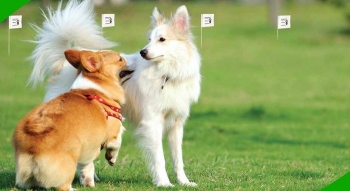
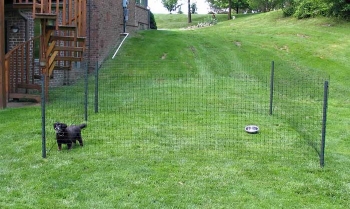
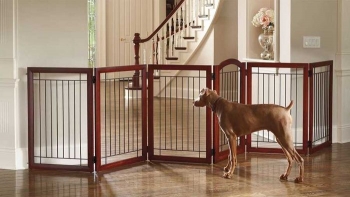
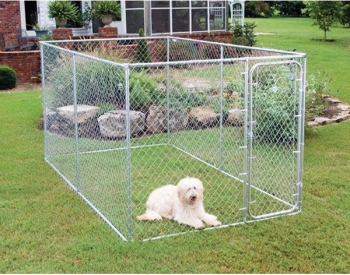
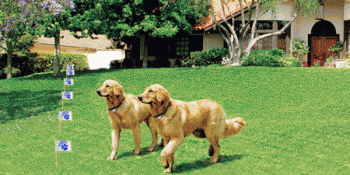
.jpg)
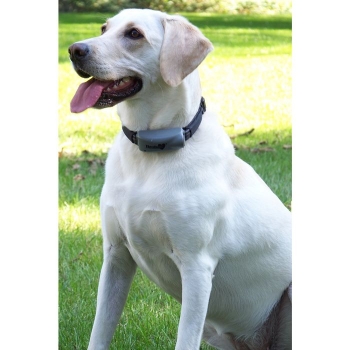

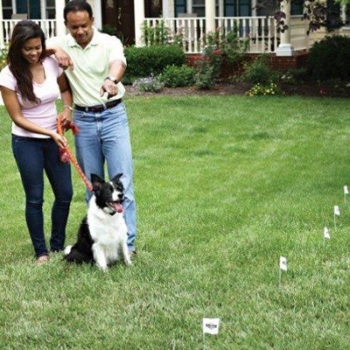
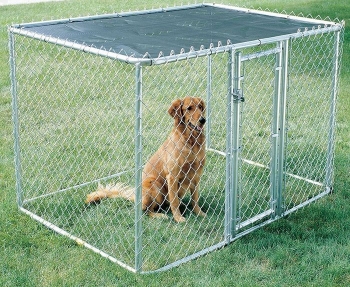
.jpg)
